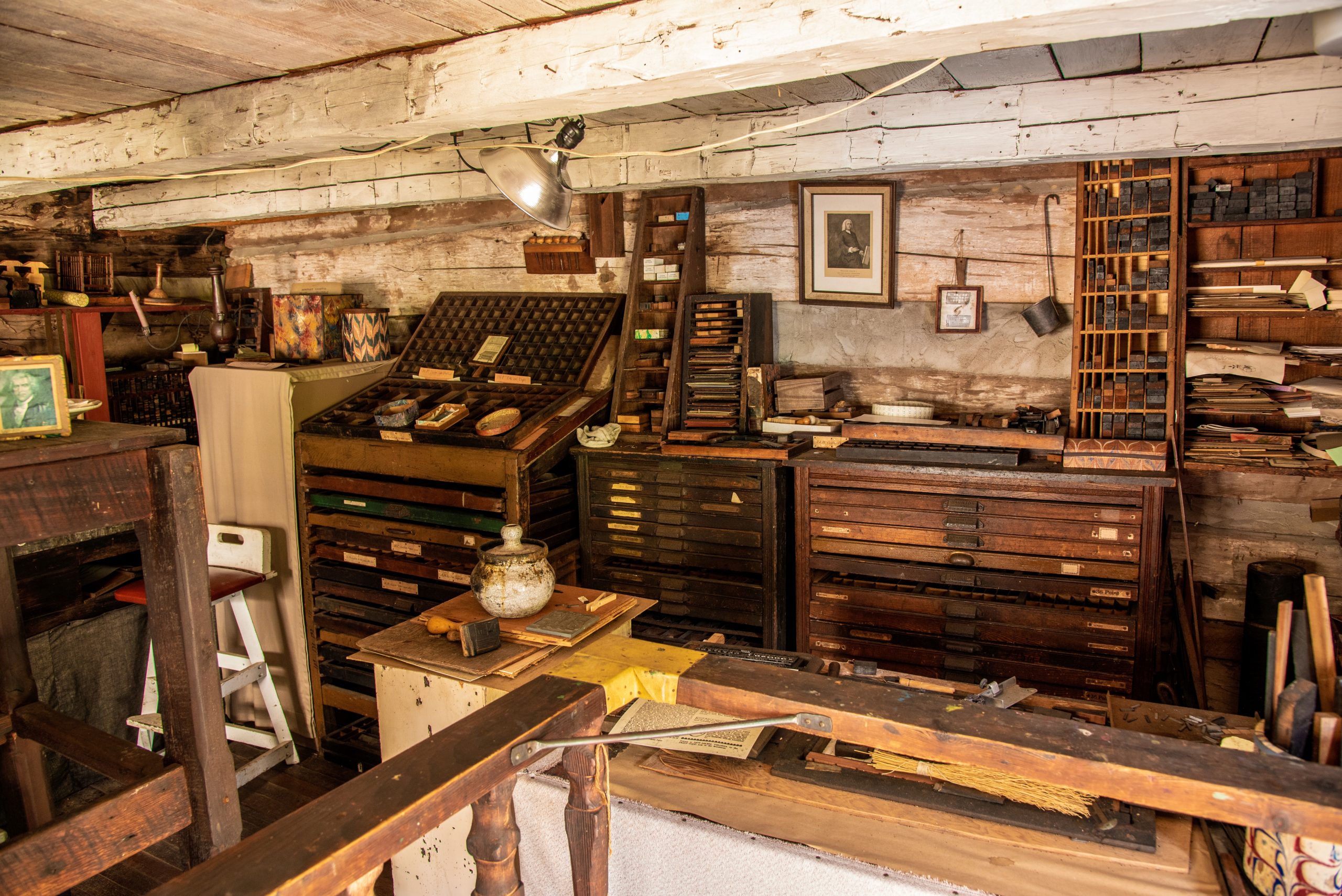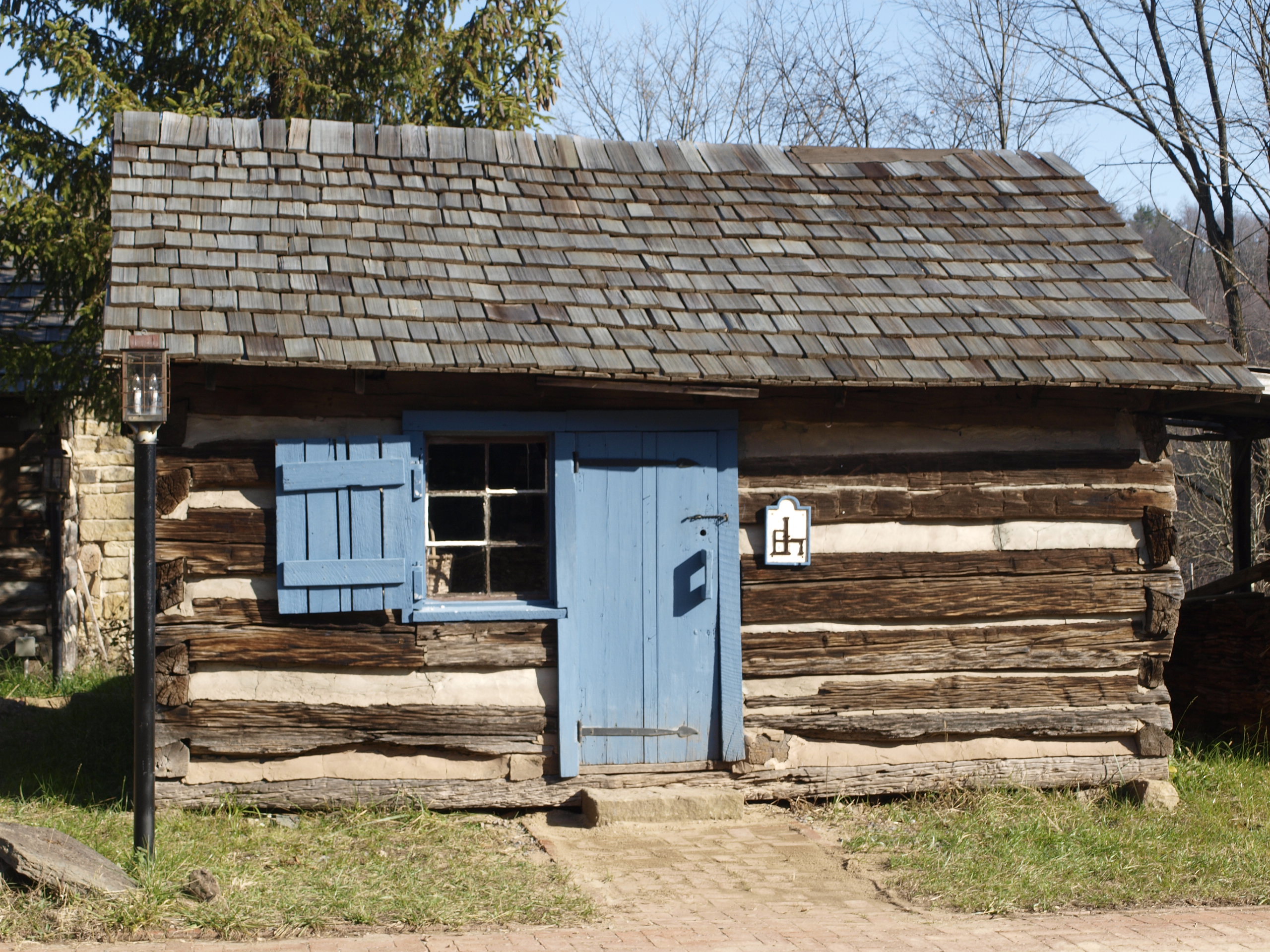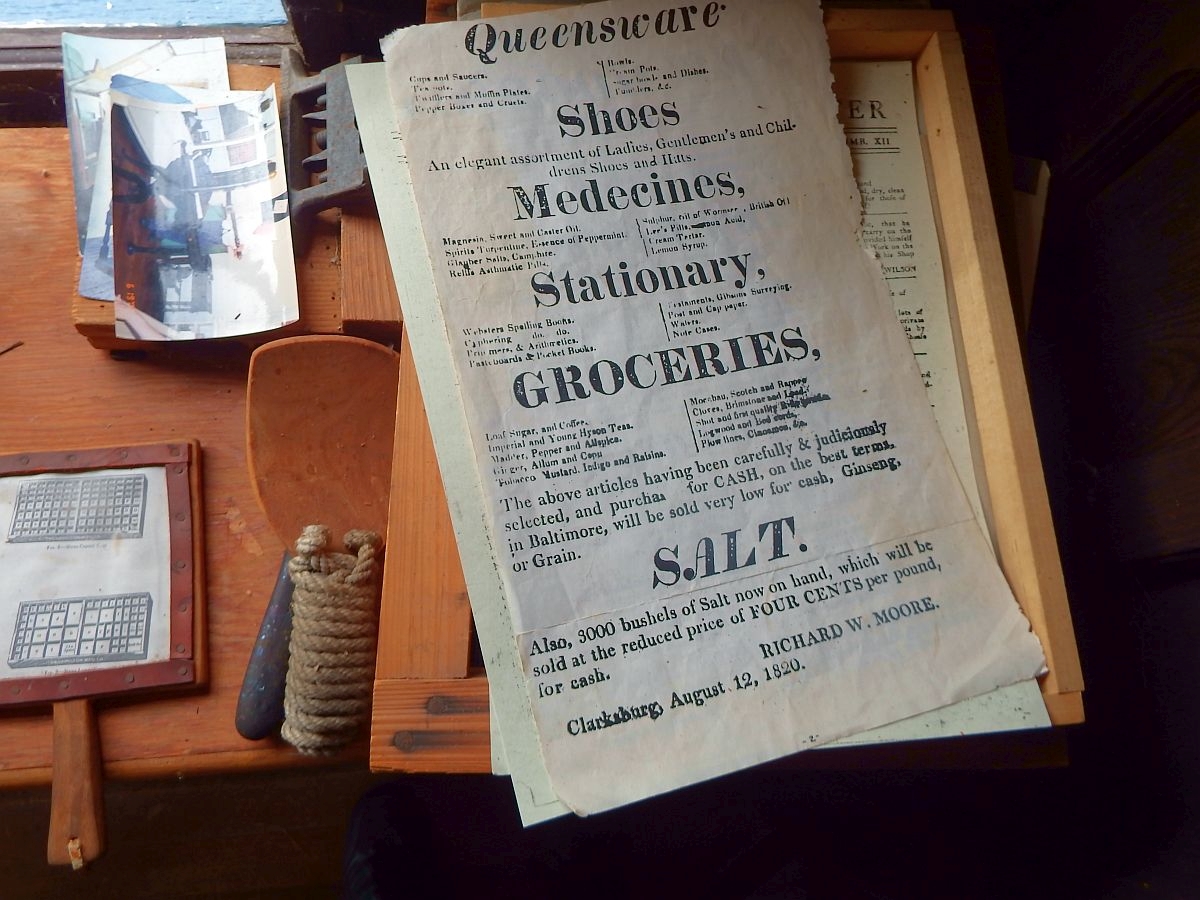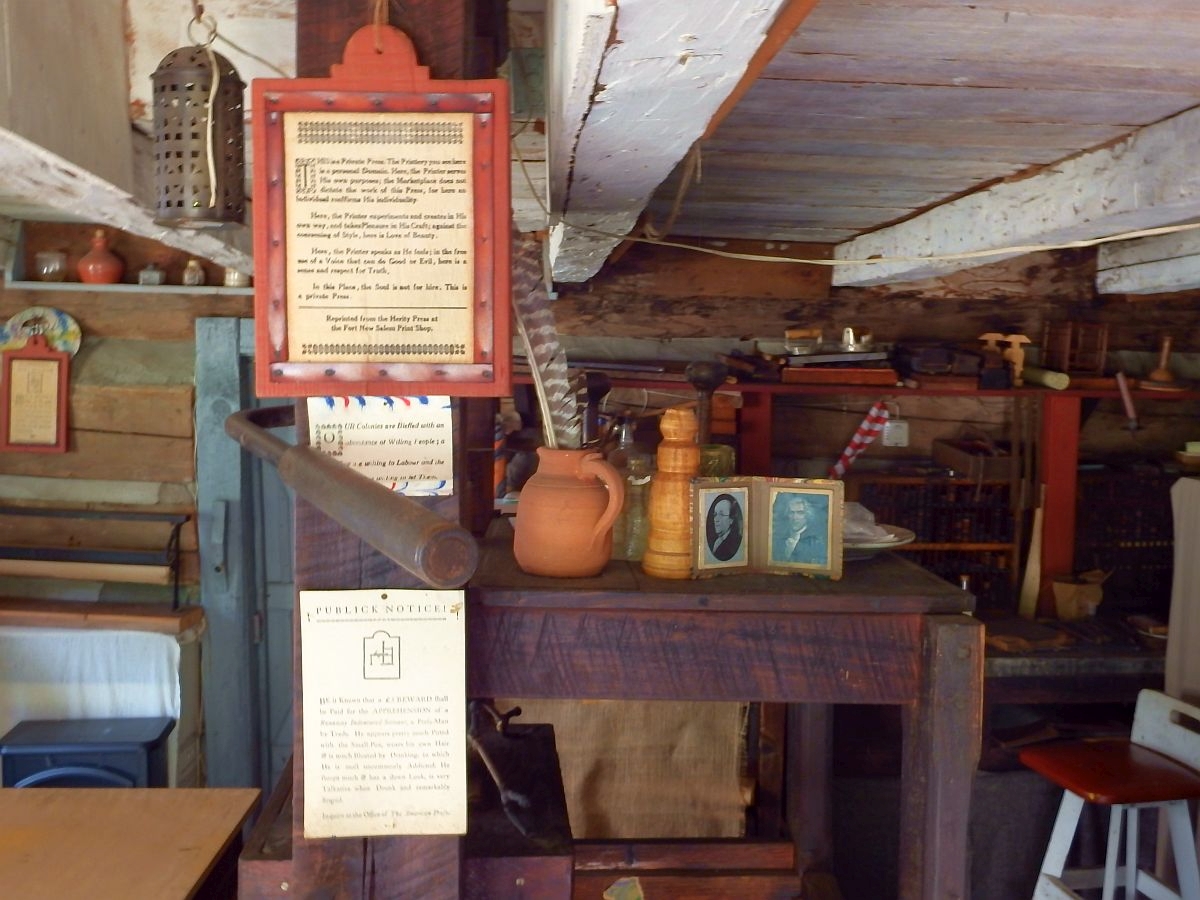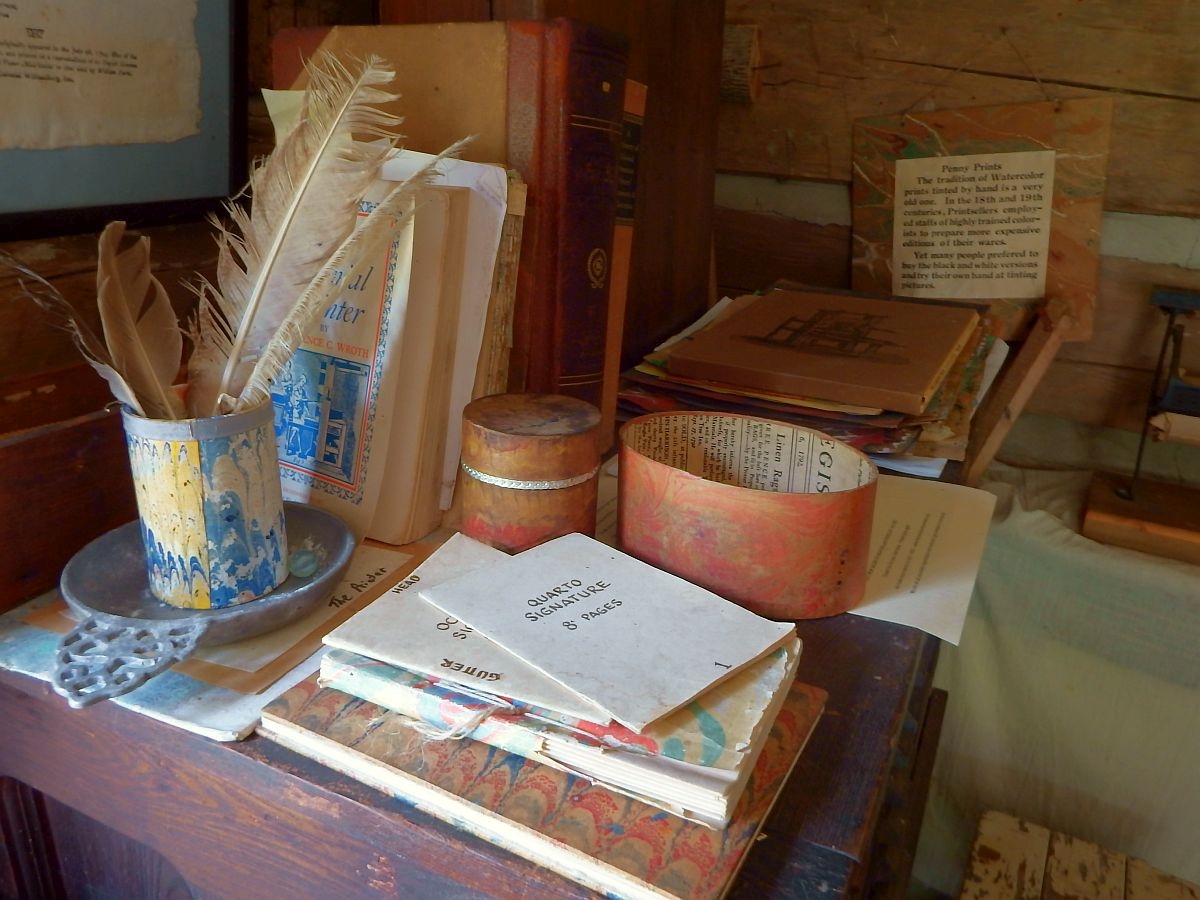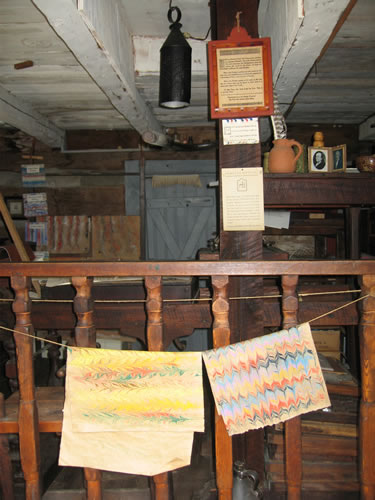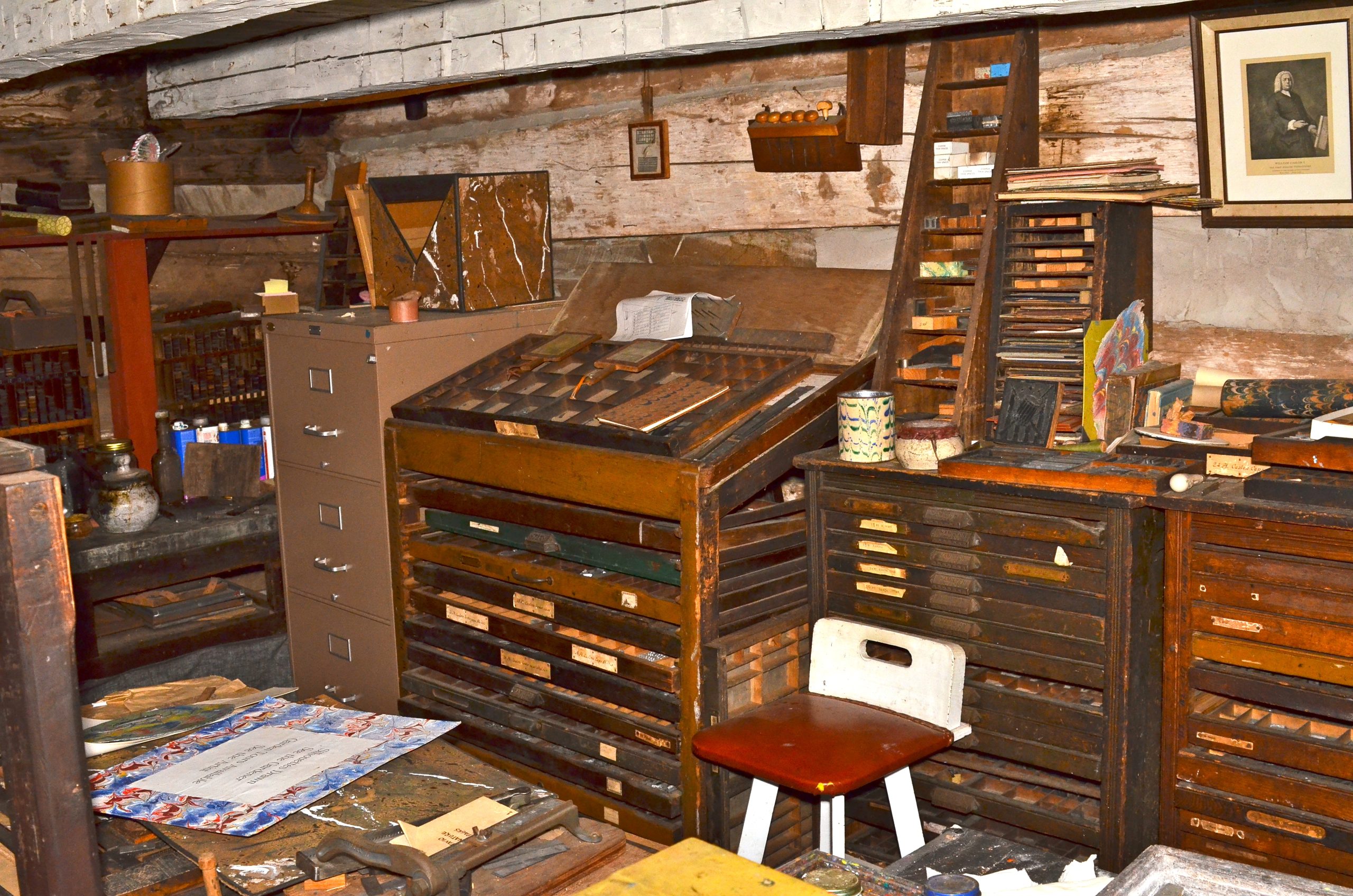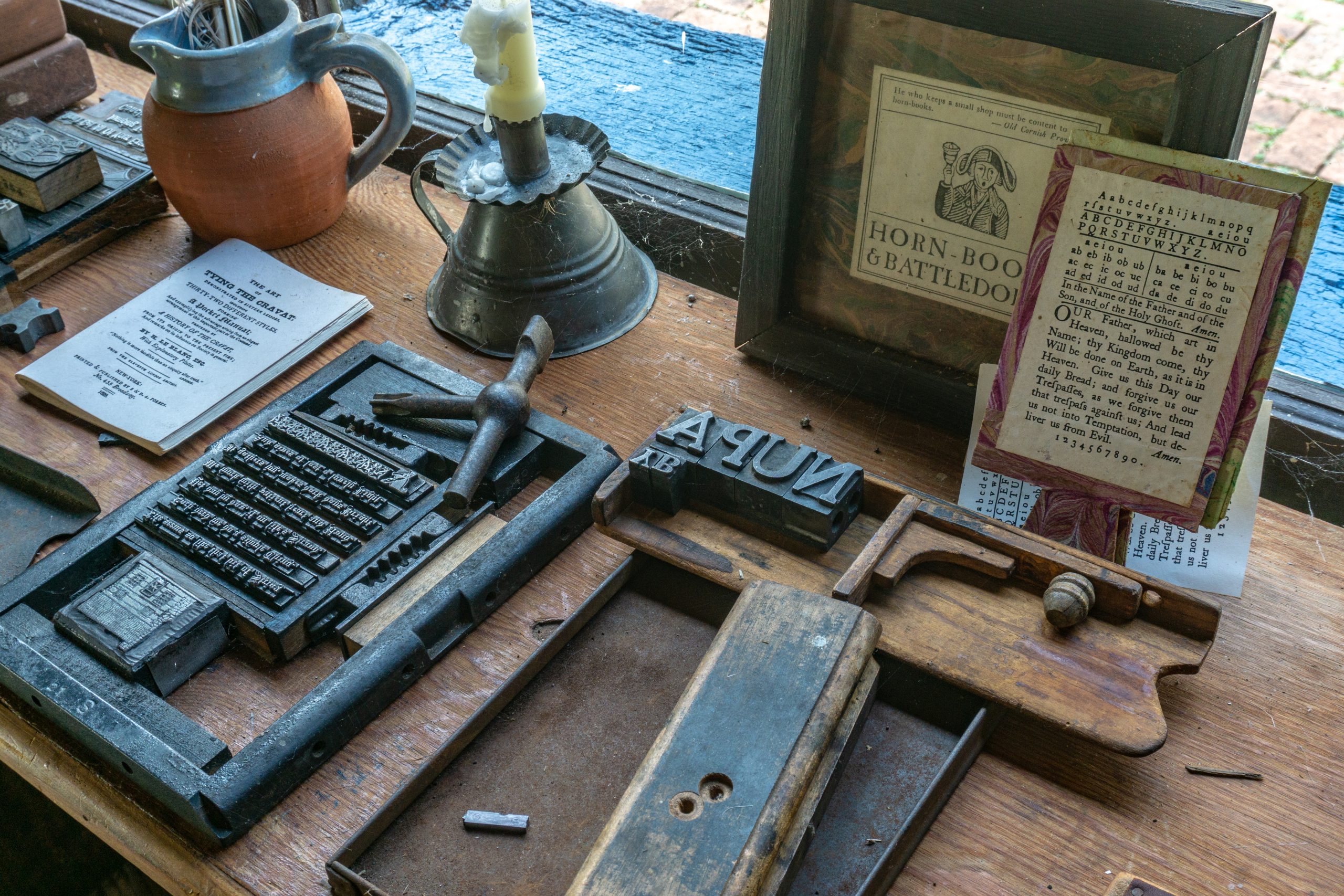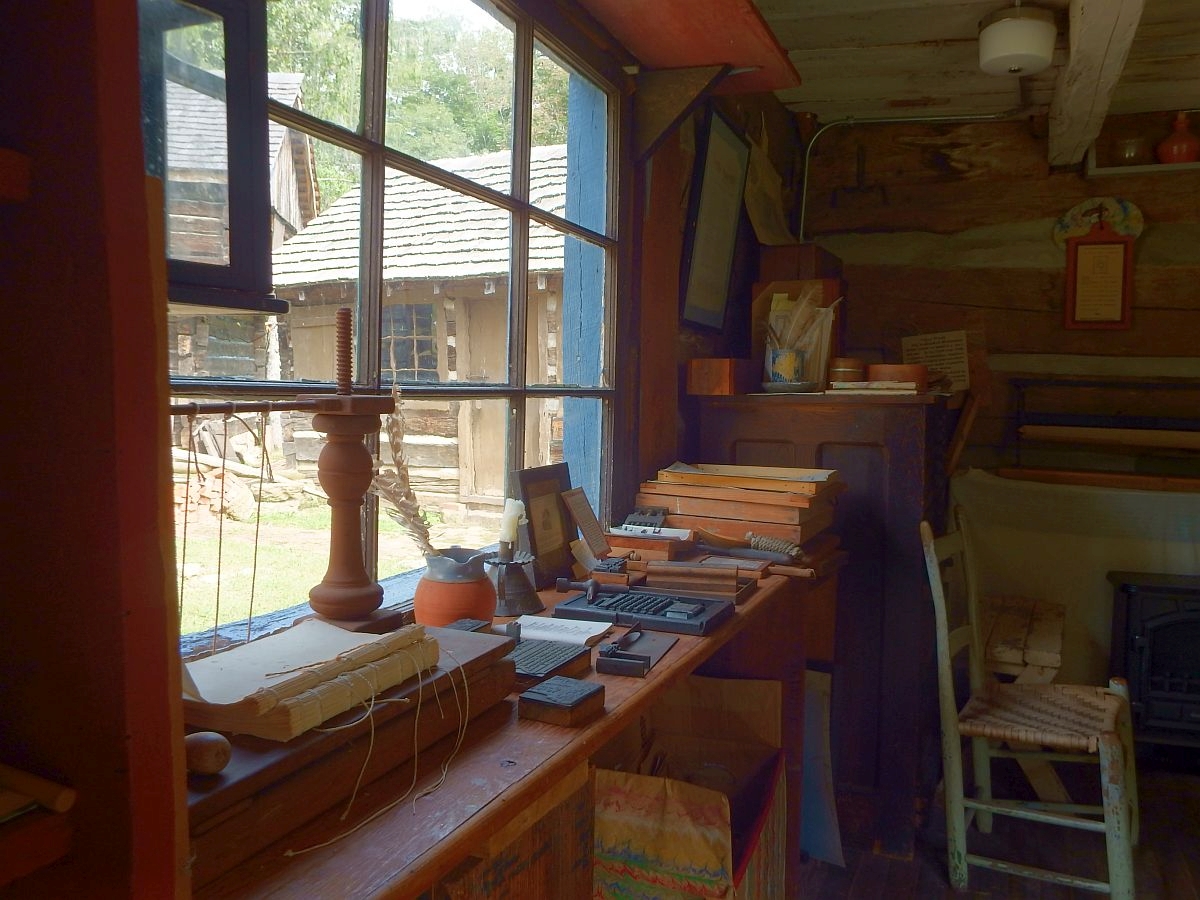PRINT SHOP
Name of Structure: The Print Shop
Original Location: Morgans Run Road – Doddridge County
Donated By: Bill and Stella Walker
Original Sponsor: The Secret Family of Clarksburg
Additional Sponsors: N/A
The building materials for the Print Shop came from a small log home. It would probably be identified as an Irish style country house, meaning that it was very typical of the houses being built by the Irish or Scotch farmers at that time. If it had been rebuilt according to its origin, it would have had a fireplace instead of the large window.
The Print Shop was an important part of the community, even though by the time the paper was printed and distributed it was old news. The Print Shop at Fort New Salem has a recreated 18th century printing press donated by Willis G. Tetrick and assembled by former instructor Harold Reed.
The printing press itself came from humble origins, possibly from the development of the cider or the cheese press. The first presses that came to this country came from England or Holland. They were usually called Common Wooden Press, English Common Press, and later when metal presses were used, all were referred to as the Old Wooden Press. In 1640, Stephen Daye did the first printing in Massachusetts. The Ben Franklin and Isaiah Thomas presses were similar in style. The early shops were the center of activity for information. They did government printing and produced pamphlets and broadsides — anything for public information. They also printed newspapers and almanacs. These items reported new legislation governing the colonies and reports from newspapers in other cities and countries. Broadsides could be printed when a new shipment of goods arrived, livestock strayed, apprentices ran away, or even when you were angered by your neighbor.
Print Shops stocked and sold writing supplies, quills, ink, stationery (24 sheets is a quire), books, ledgers, and sometimes served as the Post Office.
The activities of a print shop included engraving, printing, illustration, binding, marbling paper and sometimes paper making. The apprentices duties included: assisting the printer in the setting of type, locking up type, dampening paper for printing, operating the press, hanging paper to dry, trimming and folding dry printed items and paper for blank books for binding, mixing glue and printing ink, marbeling paper, throwing type when a job was completed, composing items to print, binding and rebinding books, stitching pamphlets, wood engravings illustrations, fetching water for shop use, carrying wood, trimming and caring for candles in the shop, and sweeping and assisting with all other chores to keep the shop neat and clean.
The content of this page was developed by information provided to and written by David Huffman, 2023 Intern Fairmont State University.

